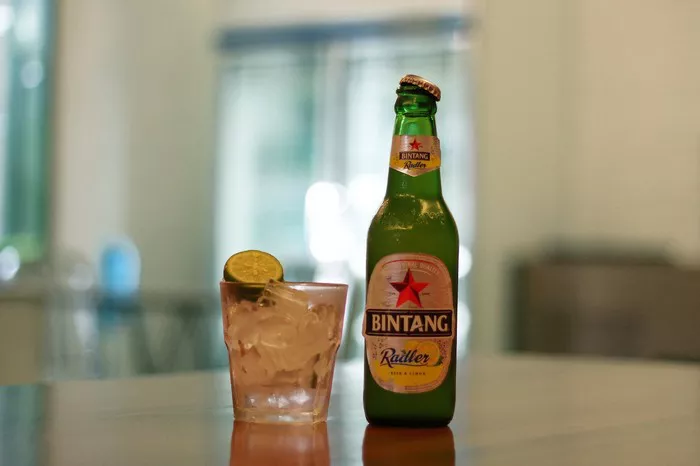Strong beer, often associated with bold flavors and high alcohol content, stands as a distinct category in the world of brewing. These robust brews offer a complexity of flavors and a higher alcohol by volume (ABV) that sets them apart from more standard beer options. In this comprehensive guide, we will explore the realm of strong beer, uncovering its history, styles, brewing methods, and the unique tasting experiences it offers. By the end of this article, you’ll have a profound appreciation for the world of strong beer and the potent pleasures it brings to the palate.
I. Defining Strong Beer
Strong beer is a broad category that encompasses a range of beer styles known for their elevated alcohol content. While there is no universally agreed-upon ABV threshold for strong beer, it often includes brews with an alcohol content of 7% ABV or higher. The term “strong beer” is used to distinguish these potent brews from the more typical session beers with lower alcohol levels.
II. Historical Significance
The roots of strong beer date back centuries and are entwined with the history of brewing. Strong ales and beers have been brewed since ancient times, often as a means to preserve the beverage for long voyages or to withstand cold climates. In medieval Europe, strong beer was known as “liquid bread” and was consumed for its nutritional value during fasting periods.
III. Styles of Strong Beer
The category of strong beer encompasses a wide variety of styles, each with its own distinct characteristics. Here are some of the most notable styles of strong beer:
Imperial Stout: This dark and robust beer is known for its rich flavors of roasted malt, chocolate, and coffee. It often has an ABV well above 10%, making it a potent and indulgent choice.
Barleywine: Barleywines are strong ales with an alcohol content that can range from 8% to 15% or higher. They feature a sweet and malty profile with hints of caramel, toffee, and dark fruits.
Belgian Quadrupel: Quadrupels are a Belgian specialty, and they are characterized by their deep amber color and complex flavors. They often have an ABV exceeding 10% and offer notes of dark fruit, spices, and a slightly sweet finish.
Double IPA (DIPA): This style of beer is a hoppier and stronger version of the classic India Pale Ale (IPA). Double IPAs often have an ABV between 7% and 12% and showcase bold hop flavors and aromas.
Old Ale: Old ales are aged beers with a strong and malty profile. They often have ABVs in the 8% to 12% range and offer notes of caramel, dark fruit, and warming alcohol.
Russian Imperial Stout: As the name suggests, this stout style was brewed to impress the Russian imperial court. It boasts high ABVs, often exceeding 10%, and delivers bold flavors of roasted malt, coffee, and dark chocolate.
IV. Brewing Strong Beer
The production of strong beer involves similar steps to those of regular beer but with a few key distinctions to accommodate the higher alcohol content. Here are the primary factors involved in brewing strong beer:
Grain Bill: Strong beers often require a higher amount of malted grains to increase the sugar content, which will ultimately lead to a higher alcohol content.
Extended Boil: The brewing process may include an extended boil to concentrate the flavors and sugars in the wort.
Yeast Selection: Brewers often use yeast strains with higher alcohol tolerance to ensure a complete fermentation.
Fermentation: Fermentation may take longer in strong beer production to allow the yeast to convert the additional sugars into alcohol and carbonation.
Aging: Some strong beer styles benefit from extended aging in tanks or barrels to mellow out and develop more complex flavors.
V. Tasting Strong Beer
Tasting strong beer is a distinct experience that requires attention to detail and an appreciation for the depth of flavors. Here’s how to savor strong beer:
Glassware: Choose an appropriate glass that allows you to capture the beer’s aromas. For many strong beer styles, a tulip-shaped glass is ideal.
Color Observation: Examine the beer’s color and clarity. Strong ales can range from deep amber to pitch black, while strong lagers may exhibit a range of hues.
Aromas: Swirl the beer gently to release its aromas. Take in the scents, which may include notes of malt, caramel, dark fruits, hops, and alcohol.
Flavor Evaluation: Take a small sip and allow the beer to roll across your palate. Pay attention to the balance of sweetness, bitterness, and any other flavor notes characteristic of the style.
Alcohol Warmth: Strong beer often imparts a warming sensation due to its elevated alcohol content. Note how the alcohol presence complements the overall flavor profile.
Finish: Evaluate the finish of the beer. Does it linger with complex flavors, or is it more straightforward and warming?
VI. Pairing Strong Beer
Pairing strong beer with food can be an exquisite culinary experience. The bold flavors and alcohol content of strong beer allow it to stand up to rich and flavorful dishes. Here are some pairing ideas:
Imperial Stout: Pair with robust dishes like grilled steaks, chocolate desserts, or blue cheese.
Barleywine: Enjoy with roasted meats, strong cheddar cheese, or bread pudding.
Belgian Quadrupel: Complement the beer’s sweetness with dishes like duck confit, foie gras, or fruit-based desserts.
Double IPA: Pair with spicy foods, such as Thai or Indian cuisine, as the hops can balance out heat.
Old Ale: Goes well with roasted root vegetables, aged gouda, or a hearty beef stew.
Russian Imperial Stout: Match with oysters, smoked salmon, or chocolate truffles.
Conclusion
Strong beer, with its potent flavors and elevated alcohol content, occupies a special place in the world of brewing. It offers a diverse range of styles and tasting experiences that cater to those who appreciate the complexity and depth of flavor in a glass. As you explore the world of strong beer, may you uncover the captivating pleasures it has to offer and develop a deep appreciation for this remarkable category of brews.


